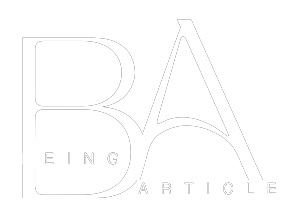How To Ask A Professor To Be Your Advisor By Email?
How to Ask a Professor to Be Your Advisor by Email
Email can be an effective way of reaching out to your advisor, especially when they’re busy or unavailable. But remember, professors receive hundreds of emails daily, so it’s essential that you be specific with what you want in your message.
Your email should always be courteous, informative, and timely. Furthermore, include your name and a formal salutation at the beginning of the message.
How should you approach a professor to be an advisor?
Emailing can be an effective way to ask them questions and make requests, but remember that faculty receive many emails daily and may take some time to respond. Therefore, if your question or comment is particularly urgent or sensitive, book a face-to-face meeting instead.
One of the most effective ways to approach a professor about becoming your advisor by email is by sending an initial message that expresses your enthusiasm for their research and why you think you would make an excellent addition to their group. This can be done in several paragraphs, demonstrating your enthusiasm for what they do and why you think you would make an excellent addition.
Begin by addressing your professor respectfully, using their formal title and last name (Dr. XYZ, Professor XYZ). If you’re uncertain of their title, check the class syllabus or look up an old email to get a sense of their correct title.
Write a brief introduction about yourself and your interests, along with how you became familiar with the professor’s research. This is an excellent chance to demonstrate that you’ve done your due diligence and possess a comprehensive understanding of their work – something sure to impress the professor!
Be sure to include a link to either your website or CV when sending in your application. The former provides the professor with an excellent summary of your academic achievements, while the latter serves as an invaluable resource in determining if they have shown interest in you.
Don’t be afraid to ask lots of questions in the body of your email to your advisor about the research and graduate program they teach in. This can be especially beneficial if you’re still deciding how to pursue getting your Ph.D.
Never send an email directly to a professor without first checking their department website or curriculum vitae to gain insight into what they are working on and their current publications. Doing this will enable you to determine if they are suitable for assisting with your Ph.D. journey and give you a deeper understanding of their work.
As a student, approaching your professor as your advisor can seem intimidating. But having the right approach makes all the difference. In this article, we’ll provide some tips on how to approach professors effectively for advisors and make a great impression.
Research the professor’s Work and Interests.
Before approaching a professor, it is essential to research their area of expertise and current research interests. Look up any published works or ongoing projects they have so that you can gain an understanding of their research focus and whether it aligns with yours. This will give you valuable information regarding their field of research as well as whether your interests overlap.
Establish Contact Via Email
When reaching out to a potential advisor, email is the most efficient method. This ensures the professor has time to respond when it’s most convenient for them. When writing your email, be clear about your intentions and research interests; keep it concise and to the point.
Be polite and professional.
When communicating with a potential advisor, it’s essential to maintain an air of politeness and professionalism. Use proper grammar and avoid informal language; address them by their proper title (e.g., Dr. or Professor); sign off with a formal closing such as “Sincerely or Best Regards.”
Demonstrate Your Enthusiasm and Commitment
When approaching a potential advisor, it is essential to demonstrate your enthusiasm and dedication to your field of study. Tell them why you are interested in their research and how you hope to contribute. Additionally, highlight any relevant coursework or research experience you have had within this area.
Be Prepared for the Meeting
If the professor agrees to meet with you, be ready with questions about their research and expectations for your work. Additionally, discuss research interests and long-term career objectives with them beforehand.
How to politely ask a professor for advice?
If you have questions or issues regarding class or homework that need discussing with your professor, there are some steps you can take before sending an email. These include verifying the questions are on the syllabus, checking if other students have asked similar questions in class or via other students, and seeking other people’s opinions before approaching your professor.
When seeking assistance with your papers or asking for specific information, spell your professor’s name correctly and their official title (Professor, Dr., or Doctor) correctly. Doing this demonstrates your respect for their work and may result in a more favorable response.
Once you’ve spelled their name correctly, it’s essential to introduce yourself and explain what your question or request is. Doing this saves them time from following up multiple times for clarification. Furthermore, provide identifying information about yourself so they know who you are.
Finally, be concise and to the point in your message so professors can quickly assess if they can assist you. Doing so saves them time from reading an extensive email or spending unnecessary energy answering unnecessary questions.
Another essential tip when writing email correspondence is to write it professionally. This means using proper grammar and spelling without including any emojis or unnecessary personal information. Additionally, you can use a free spelling and grammar checker like Grammarly to guarantee your email is error-free before sending it off.
When addressing a professor by name, use an official salutation such as “Dear” or “Hello.” This is considered appropriate and respectful in an academic setting and will help them respond more promptly.
In your introduction, be sure to include both your full name and the class or section you are taking. It may also be beneficial for the professor to know your major and year of study as this helps them place you within the class and understand what kind of student you are.
Asking a professor for advice can be intimidating, especially if you don’t know how to approach them. But seeking counsel from an experienced and knowledgeable professor is invaluable in your academic and professional journey. In this article, we’ll offer some tips on politely seeking their opinion.
Research the Professor’s Expertise
Before seeking advice from a professor, it’s essential to research their area of specialty. Look up their background, publications, and research interests, so you can gain an insight into whether they are suitable for providing the guidance you require. This will give you an indication of their level of knowledge and whether or not they can offer helpful suggestions.
Start With an Email
When reaching out to a professor, it’s best to begin by sending them an email. This makes it convenient for the professor to respond when most convenient. When writing your email, be clear about your intentions and request advice. Keep it concise and to the point.
Use a polite and professional tone.
When communicating with a professor, it is essential to use an upbeat tone. Address them by their proper title (e.g., Dr. or Professor), sign off with something formal like “Sincerely or Best Regards,” use correct grammar, and avoid informal language whenever possible.
Be Specific in Your Request
When asking for advice, be specific about what you need assistance with. Whether it’s related to coursework, research, or your career, be clear about your query or problem so the professor can offer the most pertinent and useful solutions. This will enable them to provide you with the most beneficial insight possible.
Respect the professor’s time.
Remember that professors are busy people, with many students seeking their advice. Show respect by being brief and to the point in your email or conversation. Do not ask for more time than necessary, and be flexible when scheduling meetings or calls.
How to Email your Advisor for the First Time?
Email is a convenient way to stay in contact with your college adviser. It allows for continuous dialogue and sending important information without needing an in-person meeting. Furthermore, email can help reach your advisor when they’re busy with other duties.
Academic advisers play a pivotal role in student success, aiding them with selecting a major, selecting courses, and managing their schedule. Furthermore, they offer guidance and support through campus processes and resources.
They can assist students in discovering opportunities not otherwise visible on their school’s website, such as honors programs, residential learning communities, self-designed study, and research opportunities. Furthermore, they help them avoid common pitfalls that could cause them to waste time in college and reduce their graduation date.
Before contacting your advisor via email, it’s best to double-check that they are the appropriate person for discussion. This is especially pertinent if you are a first-time freshman. Many colleges require mandatory meetings between freshmen and their first-year advisors, which may feel overwhelming or confusing for some students.
Once you’ve chosen who to email, craft a short subject line. Advisors typically receive many emails daily, so this way, they’ll quickly understand what message you are sending them.
Be sure to include your name and why you are writing in the body of the email. This will help your advisor recognize you when they receive it, enabling them to answer your question promptly.
Once you’ve acknowledged your academic adviser, it is essential to express gratitude for their time and assistance. Doing so can encourage them to continue providing support in helping you reach academic success.
You can also take this time to discuss any personal worries which could impact your academic progress with your adviser. This could include sharing family plans or illness, for instance.
Emailing an advisor for the first time can be intimidating. As a student, you want to make a good impression and communicate your needs clearly and concisely. In this article, we’ll provide some tips on how to email your advisor effectively and professionally.
Introduce Yourself
When emailing an advisor for the first time, it’s essential to introduce yourself. Include your name, program, and any relevant background information so they can get to know you better. This will set the tone for the rest of the email and create a personal connection between you.
Declare the Purpose of Your Email
Be clear and concise when stating the purpose of your email. Are you seeking advice, asking for a meeting, or needing feedback on a project? Be specific so that your advisor knows exactly what you require.
Be polite and professional.
When communicating with your advisor, it is essential to use a polite and professional tone. Address them by their proper title (e.g., Dr. or Professor), and sign off with an appropriate closing such as “Sincerely or Best regards.” Additionally, use proper grammar and avoid informal language whenever possible.
Provide Context
Give context for your request or question. Describe why you need your advisor’s assistance and include any pertinent information that will enable them to comprehend your situation better. Doing this will enable them to provide the most pertinent and helpful advice possible.
Finish with a call to action.
Conclude your email with an invitation for further action from your advisor. Ask for a meeting, provide feedback on your project, or request any other necessary steps they can take. This will guarantee that everyone understands the purpose of your email and what’s expected of them.
How can you email your advisor about registration?
One of the advantages of being a college student is constantly communicating with faculty and staff who know what they’re doing. Utilize their expertise, as well as any incentives they might offer up. Not only will they guide you through MIT, but they might just have some interesting facts about yourself too! Plus, who knows – maybe they even have some cool prizes too? Whatever it may be, soon enough, you’ll see their hard work bear fruit!
As a student, emailing your advisor about registration can be an essential step in making sure you enroll in the right courses at the right time. However, it’s essential to approach this communication with professionalism and clarity. In this article, we’ll offer some tips on how to effectively email your advisor about registration.
State Your Purpose Clearly
Be clear about the purpose of your email. Are you seeking advice on course selection or assistance with registration? Make sure to state this purpose both in the subject line and the body of the message.
Provide Context
Give context for your request. Describe your current academic status, program requirements, and any other relevant details that will help your advisor better comprehend your situation and offer useful advice. This way, they can provide the most pertinent and pertinent guidance possible.
Be Specific
Be specific with your questions or problems. If you need assistance selecting courses, provide a list of potential courses and seek feedback from your advisor. Similarly, if navigating the registration system is challenging, be clear about the problems encountered.
Use a Professional Tone
When communicating with your advisor, it’s essential to use an approachable yet professional tone. Address them by their proper title (e.g., Dr. or Professor), and sign off with an effective closing such as Sincerely or Best Regards. Moreover, use proper grammar and avoid informal language whenever possible.
Finalize Your Email with a Call-to-Action
Finally, conclude your email with an encouraging request for further communication. Request a meeting or follow-up email to address any registration queries or issues so that everyone involved understands its purpose and what’s expected of them. This will guarantee that everyone understands what needs to be done next.
FAQ’s
What should I include in my email to the professor?
You should include a brief introduction of yourself, your research interests, and why you are interested in working with the professor. It’s also a good idea to attach your resume or CV and any relevant writing samples or research work you have done.
How should I address the professor in my email?
You should address the professor formally, using “Dear Professor [Last Name]” or “Dear Dr. [Last Name]” if they hold a doctoral degree. If you are not sure about their title or prefer to use gender-neutral language, you can use “Dear [First Name] [Last Name]”.
How can I show that I have researched the professor’s work and interests?
You can mention specific publications, projects, or courses that the professor has been involved in that align with your interests. You can also refer to any research questions or ideas you have that build on their work, and ask if they would be willing to discuss these further with you.
What should I say to express my interest in working with the professor?
You can express your interest in working with the professor by explaining how their expertise and mentoring would benefit your academic and career goals. You can also mention any specific skills or experience you have that would be valuable to their research projects or lab.
How should I ask if the professor is available to be my advisor?
You can ask if the professor is available to discuss the possibility of being your advisor, and if so, suggest a few dates and times that work for you to meet in person or have a Zoom call. You can also ask if there are any specific requirements or procedures you need to follow to apply for a research position or program with the professor.
How should I end my email to the professor?
You should thank the professor for their time and consideration, and provide your contact information so they can follow up with you. You can also reiterate your interest in working with them and express your enthusiasm for the opportunity to learn from and contribute to their research.



















